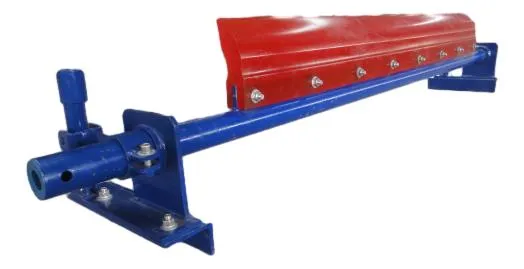 Afrikaans
Afrikaans  Albanian
Albanian  Amharic
Amharic  Arabic
Arabic  Armenian
Armenian  Azerbaijani
Azerbaijani  Basque
Basque  Belarusian
Belarusian  Bengali
Bengali  Bosnian
Bosnian  Bulgarian
Bulgarian  Catalan
Catalan  Cebuano
Cebuano  Corsican
Corsican  Croatian
Croatian  Czech
Czech  Danish
Danish  Dutch
Dutch  English
English  Esperanto
Esperanto  Estonian
Estonian  Finnish
Finnish  French
French  Frisian
Frisian  Galician
Galician  Georgian
Georgian  German
German  Greek
Greek  Gujarati
Gujarati  Haitian Creole
Haitian Creole  hausa
hausa  hawaiian
hawaiian  Hebrew
Hebrew  Hindi
Hindi  Miao
Miao  Hungarian
Hungarian  Icelandic
Icelandic  igbo
igbo  Indonesian
Indonesian  irish
irish  Italian
Italian  Japanese
Japanese  Javanese
Javanese  Kannada
Kannada  kazakh
kazakh  Khmer
Khmer  Rwandese
Rwandese  Korean
Korean  Kurdish
Kurdish  Kyrgyz
Kyrgyz  Lao
Lao  Latin
Latin  Latvian
Latvian  Lithuanian
Lithuanian  Luxembourgish
Luxembourgish  Macedonian
Macedonian  Malgashi
Malgashi  Malay
Malay  Malayalam
Malayalam  Maltese
Maltese  Maori
Maori  Marathi
Marathi  Mongolian
Mongolian  Myanmar
Myanmar  Nepali
Nepali  Norwegian
Norwegian  Norwegian
Norwegian  Occitan
Occitan  Pashto
Pashto  Persian
Persian  Polish
Polish  Portuguese
Portuguese  Punjabi
Punjabi  Romanian
Romanian  Russian
Russian  Samoan
Samoan  Scottish Gaelic
Scottish Gaelic  Serbian
Serbian  Sesotho
Sesotho  Shona
Shona  Sindhi
Sindhi  Sinhala
Sinhala  Slovak
Slovak  Slovenian
Slovenian  Somali
Somali  Spanish
Spanish  Sundanese
Sundanese  Swahili
Swahili  Swedish
Swedish  Tagalog
Tagalog  Tajik
Tajik  Tamil
Tamil  Tatar
Tatar  Telugu
Telugu  Thai
Thai  Turkish
Turkish  Turkmen
Turkmen  Ukrainian
Ukrainian  Urdu
Urdu  Uighur
Uighur  Uzbek
Uzbek  Vietnamese
Vietnamese  Welsh
Welsh  Bantu
Bantu  Yiddish
Yiddish  Yoruba
Yoruba  Zulu
Zulu belt idler roller
Understanding Belt Idler Rollers Their Importance and Applications
Belt idler rollers are crucial components in various industries that utilize conveyor systems to transport materials efficiently. They play a significant role in enhancing the performance of conveyor belts by providing support and reducing friction, ultimately ensuring smooth operation. In this article, we will explore the functionality, design, types, and applications of belt idler rollers, highlighting their importance in material handling processes.
What are Belt Idler Rollers?
Belt idler rollers are cylindrical devices that are used to keep conveyor belts aligned and ensure proper tension. These rollers are usually positioned along the conveyor system in various locations, including the loading and return sections. Their primary function is to support the belt and facilitate movement while minimizing wear and tear on the conveyor system. They are essential for maintaining the efficiency and lifespan of conveyor belts, which in turn affects the overall productivity of material handling operations.
Key Functions of Idler Rollers
1. Support and Alignment Idler rollers provide necessary support to the belt, helping to maintain its alignment as it moves along the conveyor. This alignment is critical to prevent slippage, which can lead to material spillage or belt damage.
2. Tension Maintenance These rollers help maintain the correct tension in the conveyor belt. Proper tension is vital for optimal performance, as excessive slack can result in the belt slipping off the rollers or becoming misaligned.
3. Friction Reduction By providing a smooth surface for the belt to glide over, idler rollers help reduce friction, which can lead to increased energy efficiency and decreased wear on the belt itself.
4. Load Distribution Idler rollers evenly distribute the load across the belt, reducing stress on specific areas and promoting a longer operational life for both the belt and the conveyor system.
Types of Idler Rollers
belt idler roller

Belt idler rollers come in various designs to meet specific application needs
1. Flat Idlers These are the most common type, characterized by a flat surface that supports the belt as it moves. They are typically used in standard applications where the belt operates on a level plane.
2. Crowned Idlers These rollers have a slightly raised center, which helps keep the belt centered and prevents it from veering off to one side. This design is particularly useful in applications with variable load conditions.
3. Return Idlers Positioned on the underside of the conveyor, return idlers support the belt as it returns to the loading zone. They are vital for ensuring the belt operates efficiently in both directions.
4. Impact Idlers These rollers are designed to absorb shock and support heavy loads, making them ideal for areas where materials are loaded onto the belt.
Applications of Belt Idler Rollers
Belt idler rollers are widely used across numerous industries, including
- Mining For transporting ores and minerals from extraction sites to processing plants. - Manufacturing In production lines for moving products through various stages of assembly. - Logistics For efficiently moving goods in warehouses and distribution centers. - Agriculture In facilities for transporting grains and other agricultural products.
Conclusion
Belt idler rollers are indispensable components of conveyor systems that ensure their efficiency and longevity. By providing support, maintaining tension, and reducing friction, these rollers enhance the overall performance of conveyor belts in various applications. Understanding their importance and functionality can lead to better maintenance and optimization of material handling processes, ultimately contributing to increased productivity across different industries. As technology advances, the development of more efficient and durable idler roller designs will continue to improve the effectiveness of conveyor systems worldwide.
-
Wing Pulley Conveyor for Conveyor Belt MaintenanceNewsJun.16,2025
-
Self Cleaning Spiral Idler for Conveyor DesignNewsJun.16,2025
-
Pulley Lagging for Conveyor Belt AlignmentNewsJun.16,2025
-
Impact Idlers Used in Belt Conveyor for PerformanceNewsJun.16,2025
-
Ceramic Lagging Conveyor Pulley for Conveyor Belt SystemsNewsJun.16,2025
-
Belt Conveyor Idler for Heavy-Duty ApplicationsNewsJun.16,2025





























